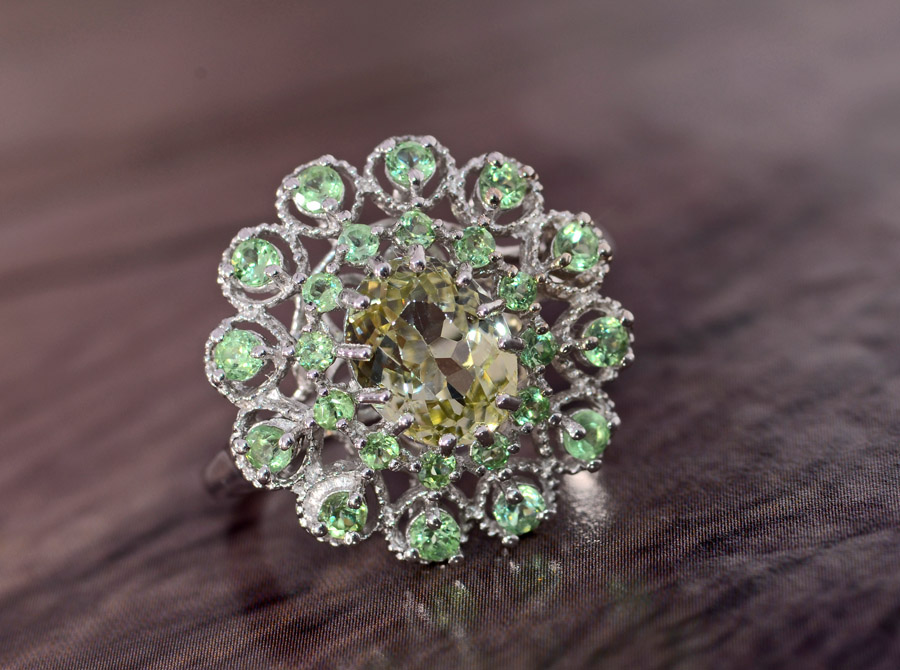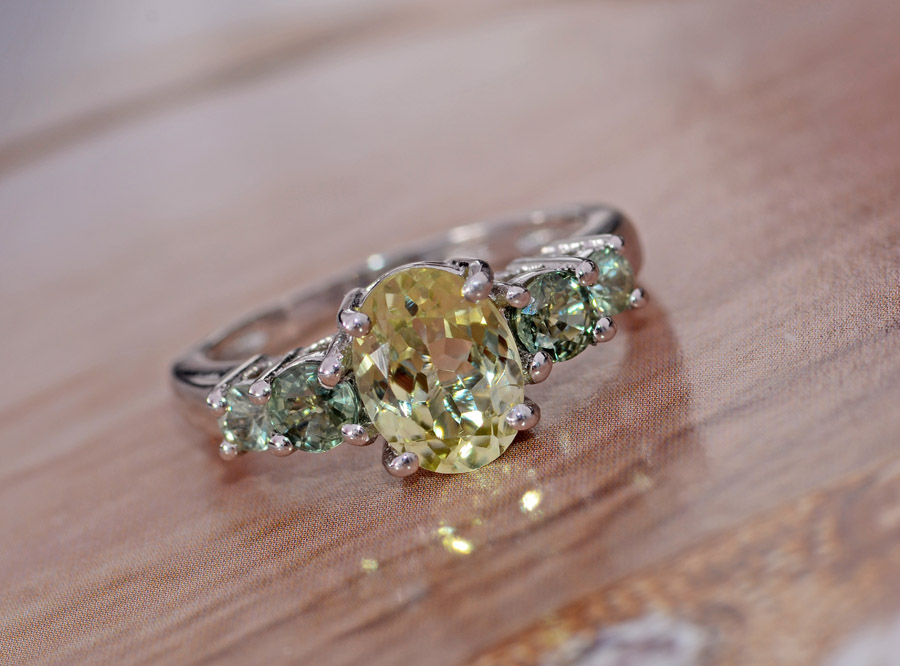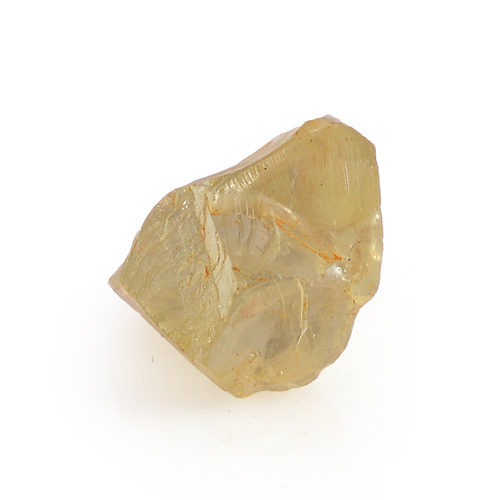Sillimanite: Madagascar Green
Sillimanite is named for one of the first American professors of science, Benjamin Silliman, who taught chemistry and geology at Yale University during the early 1800s. This gem radiates transparent pale slate blue with green or violet undertones.
Sillimanite, one of the most difficult gemstones to fashion, is normally fibrous in wavy bundles and can have a wide range of hardness within a single stone. These characteristics make sillimanite a tricky treasure to cut. It exposes a faultless cleavage in one direction, a feature it shares with diamonds. This challenge puts a premium on shaping the gem, which is a significant consideration in determining quality. One of the rarest gemstones, it is not common to find sillimanite in a local jewelry stores. It is mostly a collector's find. However, jewelry designers are beginning to adopt this aluminum silicate gem into their body of work.
- Sillimanite may stimulate endorphin production, so crystal healers refer to this as a "feel good" crystal. It raises your energy vibration and creates a euphoric feeling.
- This gem is thought to enhance your daily tasks, helping you see that menial or seemingly unimportant activities play an important role in securing your good fortune.
- It is thought to protect against stress and the trappings of material possessions.
- This crystal is said to aid in lung and sinus health.
LOCATION: Madagascar
Sillimanite exists in many countries but the best samples, those with preferred color, clarity and size, are from Madagascar. We source this outstanding gem from Madagascar mines.

- Ranks 6 to 7.5 on the Mohs hardness scale.
- Colors include colorless, blue-green, blue, bottle green, gray-green, and brown.
- Sourced from Madagascar.
- Member of the Andalusite-Kanonaite family.
- Also known as fibrolite.
- Related to the zodiac sign of Aries.
- State mineral of Delaware.
- 100 percent natural stone; no additional treatments.





